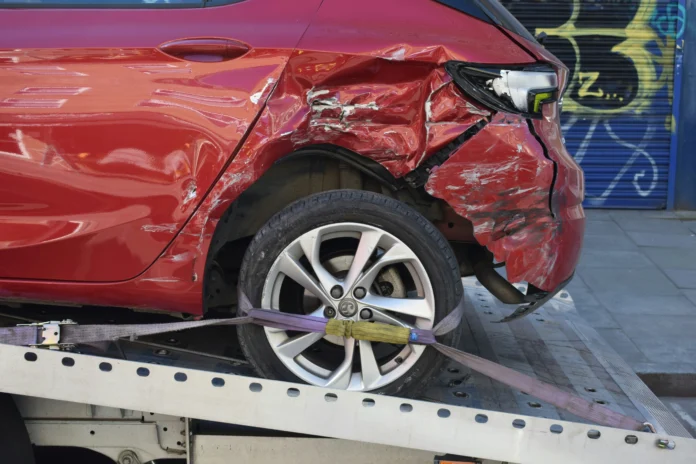Europe, the old islands, and their young drivers, especially those aged 17 to 24, continue to disproportionately figure in serious road traffic incidents. Sadly, official figures show that nearly one in five of all cases in which someone is killed or seriously injured in a car collision involves a younger car driver.
Male drivers in the 17-24 age group are four times as likely to suffer lethal or grave injury compared to motorists aged 25 and over. This trend has been consistent over the last couple of years because in 2023, collisions involving at least one young driver accounted for around 20% of KSI casualties.
But it’s important to also note that the overall casualty numbers have been declining compared to 20 years ago, even if the relative risk remains sadly increased among young drivers. Despite having all the numbers, the data doesn’t clearly state whether young drivers also count for the most drivers involved in an accident while uninsured.
Young drivers are more likely to experience an accident lacking car insurance
It’s no surprise that insurance costs for first-time drivers and those under 25 are quite expensive. These steep premiums could put a strain on the budget of a young driver, and would make them either delay purchasing a valid cover, settle for risky or minimal policies, or, in the worst case, drive uninsured. Reports from UK insurance groups indicate a surge in penalties for drivers aged 17-20 driving without insurance, largely correlated with premium inflation. Besides the premium costs, inexperience also plays a significant role in this scenario, as younger people are more likely to take risks frequently, drive under variable conditions without sufficient prior exposure, and misjudge distances. This mix of inexperience, risk, and high cost is perfect for leading to an uninsured accident, even if the public sources don’t mention the exact number of young drivers involved in uninsured accidents. However, an experienced driver is less likely to be involved in a car crash, so even if they lack insurance, their chances of getting labelled as uninsured drivers are lower.
Data on uninsured vehicles in countries like Ireland underscores part of the picture. In 2022, around 8.3% of private vehicles in Ireland were uninsured. By 2024, after the Irish Motor Insurance Database (IMID) came into force and enforcement was ramped up, that figure reportedly fell to approximately 4.2%. Enforcement activity, including vehicle seizures, increased significantly.
From these trends, one can only understand that young drivers face both an increased likelihood of being involved in a car crash and a higher likelihood of facing insurance-related risks. The victims of the crash can also make a Car Accident Claim Without Insurance against them if they are at fault for causing the incident. While not conclusive, the weight of evidence points to the 17-25 age bracket as the group most likely to combine those two vulnerabilities: higher accident rate and higher risk of driving without insurance.
Uninsurance and young drivers in Europe and Ireland
Across Europe, uninsured vehicle rates vary widely, as expected, due to different regulations and cultural differences among countries. Some places report single-digit percentages of vehicles that lack a valid insurance, but some have higher percentages. Even if most European governments track uninsured vehicles and enforce penalties, only a few of them run studies to identify which category of drivers is the most involved in uninsured accidents. In Ireland, the introduction of the IMID in 2024 has sharpened enforcement. Gardaí have increasingly seized uninsured vehicles, and rapid checks have enabled quicker identification of vehicles lacking insurance. While this does not directly yield data on which age groups are most involved in uninsured crashes, it does raise the cost (both legal and financial) of being caught driving without insurance. With insurance costs high, anecdotal reports and industry commentary suggest that younger drivers are among the most impacted. Between elevated premiums, increased enforcement, and high legal exposure, it is logical to infer that young drivers remain disproportionately represented among those driving uninsured, though exact age-based crash statistics remain rare in public sources.
What do experts think about the subject?
According to experts in road safety, young drivers are listed as the age group with the highest accident rate, mainly because of exposure, but also because of lack of experience and risky behaviour. The legal obligation to purchase insurance adds another layer of consequences, but unfortunately, young drivers still remain underinsured or uninsured due to cost barriers. Some reports and studies concluded that individuals who are male and young, with ages between 17 and 24, are among the most at risk of getting penalties related to insurance issues and getting seriously injured in car crashes. In these conditions, authorities in the UK and Ireland are pushing enhanced enforcement and reform to lower the number of accidents caused by the listed factors. Increased public awareness campaigns, new databases identifying uninsured vehicles instantly, and tougher penalties for driving without insurance are among the strategies being rolled out.
Is the “without insurance” layer so important in the context of car accidents?
Car accidents involving drivers who neglected to obtain insurance are more than a statistical artifact. They have societal costs because the victims struggle to get compensation, the healthcare system ends up absorbing the cost, the insurance premiums across the board can increase, and the uninsured driver will deal with financial, legal, and sometimes even reputational consequences. Without better data, public policy struggles to pinpoint how many in the young age brackets are involved in such uninsured accidents. But because young drivers are already the highest risk for serious crash involvement, combining that with high uninsured rates is deeply concerning.
The need for better data is urgent
Current data across Europe does not conclusively state which age group is most often involved in accidents and lacks insurance. However, all signs point toward younger drivers, particularly those between the ages of 17 and 24, as being disproportionately affected. Their high accident involvement, coupled with high insurance premiums and a nontrivial rate of uninsured or underinsured driving, means that this group is most likely to form the bulk of “accident + no insurance” cases. Road safety analysts, insurers, and policymakers agree that better transparency and data collection are essential to fully quantify the intersection of age, accident risk, and insurance status. Meanwhile, reforms in enforcement (such as rapid checks of insurance status), subsidies or regulations for younger driver coverage, and greater public awareness may help reduce incidents.












